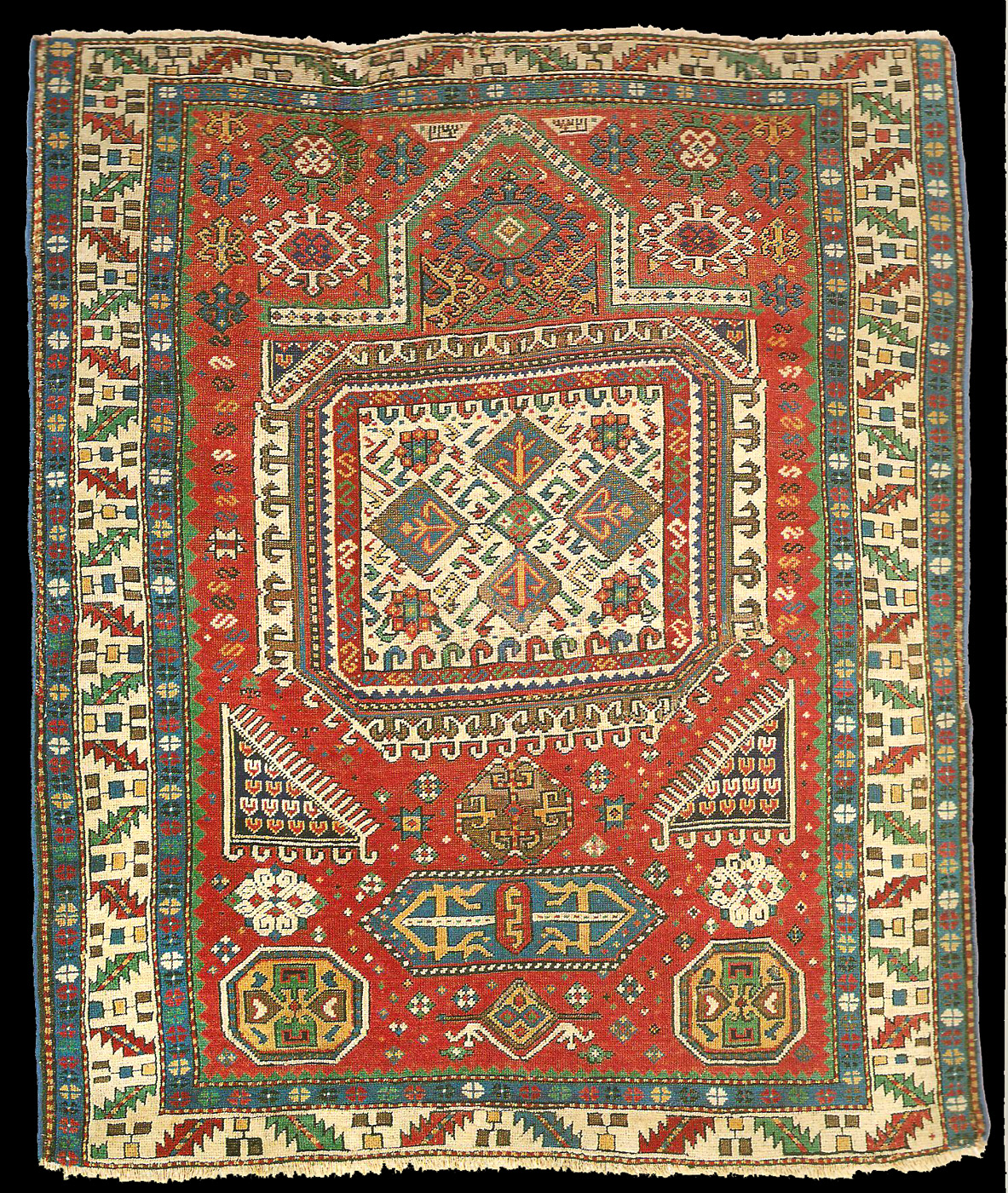|
The design of this prayer rug is related to a small group of rugs with very
early dates, an example of which is illustrated as plate 31. Most rugs from
this group have silk and or cotton in their foundation, which indicates that
these were weavings of the highest quality made for presentation or other
special occasions. This derivative example is from Shirvan. Its ivory wool
warp and red woollen weft correspond exactly to a very similar rug sold at
Lefevre in 1979, this rug was also assigned to Shirvan and dated to the
first half of die nineteenth century. Another very similar example was
acquired by the Austrian collector Peter Trimbacher for Schloss Plankenstein,
yet another was published by Skinner s in 1989. All four rugs share the same
leaf-and-calyx border and a hexagonal cartouche with stylized confronting
dragons.
Trimbacher points out that rugs with this design continued to be made unto
the 20th century, variously assigned to Kazak, Fachralo or Genje.
 |

